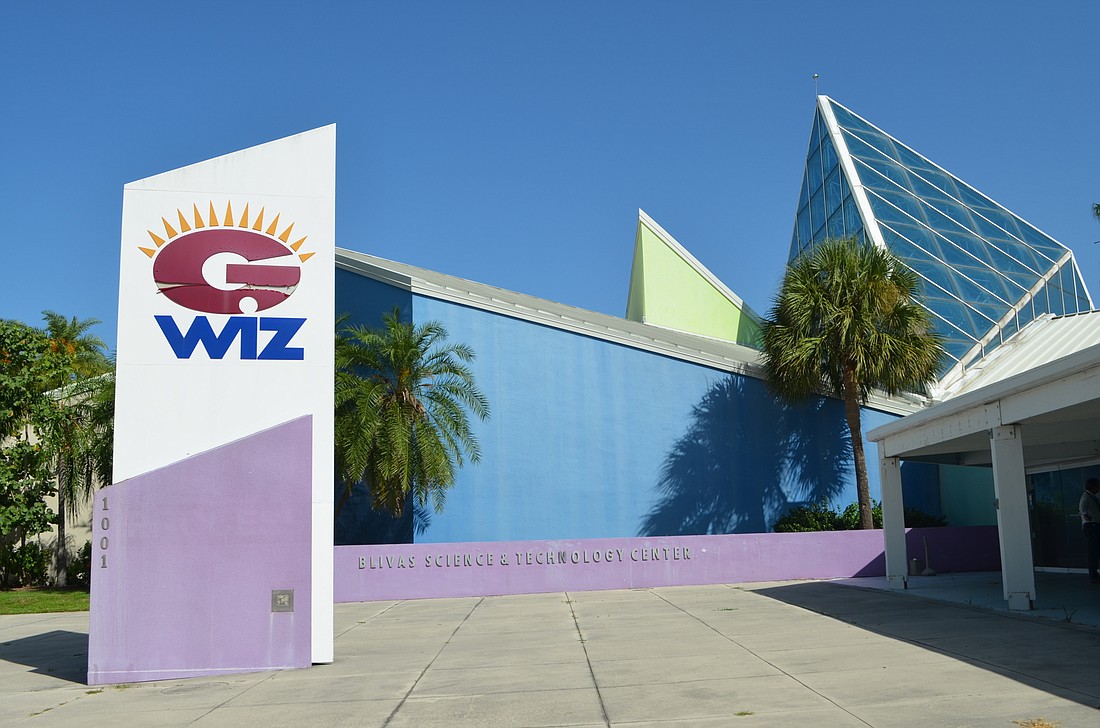- April 23, 2024
-
-
Loading

Loading

At least once a week, Rob Schanley does something almost no other Sarasota resident has been able to do since at least 2012.
Schanley, the city’s asset manager, regularly conducts walkthroughs of the former GWIZ building. The children’s science museum closed its main gallery four years ago, and the 117,000-square-foot property has been vacant since the city terminated a lease agreement in February 2014.
Today, portions of the building appear to remain in relatively good condition. The walls in the atrium still bear vibrant shades of blue, green and purple. Signs advertising the hours of operation and cost of admission are still posted behind a desk near the main entrance.
The “Fab Lab,” now used as storage space, otherwise looks about as well-kept as one might expect of a feature opened in 2011. Some of the museum’s property still remains, like in the “EcoZone,” a room that featured exhibits on plants and lizards. On the second level, more signage instructs visitors to take the “GWIZ Quiz.”
See more pictures from inside the former GWIZ building.
This year, however, Schanley determined the 33,444-square-foot building’s flaws were adding up. The city spends about $44,000 annually to keep the property from falling into disrepair, but a lack of real maintenance was exacerbating problems.
The air conditioning system, set to run at 80 degrees to prevent mold, needed to be replaced. The plumbing system was shut off completely and also in need of upgrades. The roof required repairs, and the building’s glass atrium made that task an even bigger challenge.
After initial discussions about finding a new tenant to replace GWIZ, in 2014, the city deferred any decision regarding the future of the property. Instead, officials opted to wait until Sarasota Bayfront 20:20, an independent group calling for the redevelopment of 42 acres of city-owned land adjacent to GWIZ, had finished its work.
As of this summer, the process of creating a master plan for that land still hadn’t begun in earnest. As a result, Schanley included a request for $300,000 in repairs to the GWIZ property in the city’s 2016-17 capital improvement budget, the minimum he believed was necessary to return the building to a decent condition.
Schanley said he wanted to be proactive regarding the status of the GWIZ property, built in 1976 to house the Selby Public Library. The cost of repairing the property will continue to escalate. Schanley wanted to make sure officials were aware of the situation sooner rather than later.
“I didn’t want to be the one saying, ‘By the way, it’ll cost $1 million to fix the building,’” he said.
At a July 7 City Commission meeting, Commissioner Susan Chapman used the budget request to propose replacing the building with a public park.
“I’m wondering if this is an appropriate time to have a discussion about whether maybe we want to say that building is past its prime, and maybe we take that building down and make that part a park, as the public wanted at the beginning of Bayfront 20:20,” Chapman said.
On July 17, the commission directed staff to investigate the demolition of the building. Schanley’s initial estimates placed the cost between $130,000 and $225,000 — on the high end, just $75,000 less than the requested repairs. Beyond those repairs, however, Schanley suggested a new tenant might need to invest several hundred thousand dollars itself to make the facility operational.
Not everyone is prepared to give up on the building. Sara Rankin Wilson served as the CEO of GWIZ from 2012 to 2013. The museum faced severe financial challenges, but she says the facility wasn’t a problem.
“It was a beautiful building,” Wilson said. “That would be sad if they tear it down.”
From an operations standpoint, Wilson said the building had ample parking. She remembers problems with a leaky roof, but beyond that, she recalls the GWIZ property as one with exemplary architecture in a prime location.
Michael Klauber, the leader of Bayfront 20:20, hopes to have a new planning organization guiding the redevelopment effort by September. That organization will act based on the resources and information available to it — which means the question of what to do with GWIZ is up to the city.
“It really doesn’t affect anything with 20:20,” Klauber said.
On July 28, the Greater Sarasota Chamber of Commerce briefly discussed the future of the GWIZ property — and the rest of the city-owned bayfront land — at an investment update. Chamber CEO Steve Queior said the organization doesn’t have any specifics in mind, but the group is interested in a public-private investment that would create jobs and generate revenue for the city.
For those concerned the demolition of the GWIZ facility might lead to the sale of the land to a private developer, Schanley said the fears are unfounded. The property, zoned for governmental use, requires city approval of a major conditional use for even a nonprofit to operate — and the sale of the land is not an option.
“The city couldn’t really sell the property, because we got it free from the state,” Schanley said.
If the city does make changes to the property, Wilson thinks officials should pursue a grander architectural achievement — enhancing a place she considers one of the most valuable parcels in the region.
“I felt like I was sitting on the prettiest spot in Sarasota every day,” Wilson said.